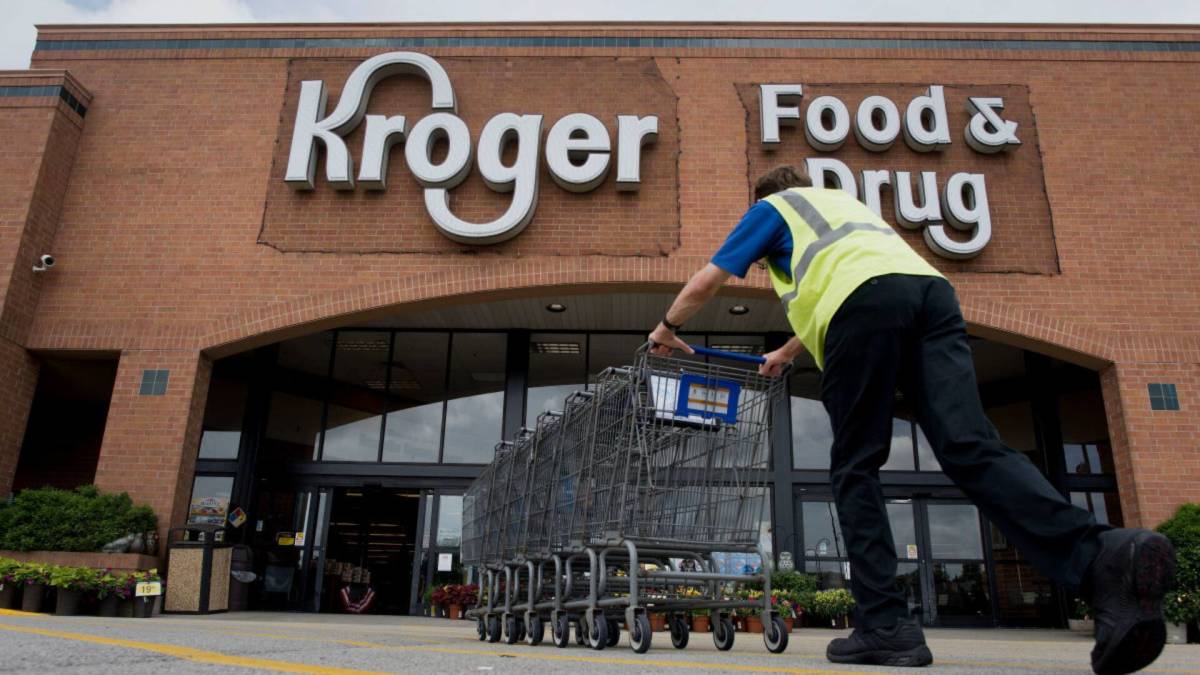Grocery chains have always operated on very thin margins and now they face pressure from tariffs, the rising costs of many items, increased labor prices, and increasing competition.
When you have to compete with rivals including Amazon, Walmart, and Target who can use grocery prices as a loss leader, it becomes especially challenging, Add in consumers who are uncertain about their finances and an unstable political atmosphere and the market becomes even more challenging.
Related: New Target CEO Making 3 Major Changes to Win Back Shoppers
“Our industry, long accustomed to operating on narrow margins, is once again feeling economically squeezed,” Food Industry Association CEO Leslie Sarasin told Supermarket News. “These performance pressures remain persistent, and the outlook presented in our recent analysis highlights a broader trend—a sharp rise in costs associated with regulatory actions at the federal and state levels, and their impact on the food industry in recent years.”
Many consumers might be surprised by how low the margins are in grocery.
“Grocery stores have especially slim profit margins, ranging from 1-3%. Independent grocers will have a different profit margin than major big-box stores,” according to a DoorDash study…”Because grocery store margins are so low, it’s important to keep sales consistently high, as a slow period could lead to major problems.”

Image source: Bloomberg/Getty Images
Kroger has led the way with closing locations
After the United States government blocked its merger with Albertsons, Kroger had to quickly make changes in order to stay competitive. That includes closing 60 stores in 2025.
“We’re simplifying our business and reviewing areas that will not be meaningful to our future growth. Unfortunately, today, not all of our stores are delivering the sustainable results we need. Also important to note, we paused our annual store review during the merger process. To position our company for future success, this morning, we announced plans to close approximately 60 stores over the next eighteen months,” acting Kroger CEO Ron Sargent Shared during the chain’s first-quarter earnings call.
More Retail Stocks:
- Kroger brings back paper coupons in a new way
- Target’s customers walked away; How it plans to win them back
- Amazon analysts turn heads with surprising take on grocery plan
Sargent made it clear that closing stores was not an easy choice.
“We don’t take these decisions lightly, but this will make the company more efficient, and The Kroger Co. will offer roles in other stores to all associates currently employed at affected stores,” he added.
Kroger will also open about 30 new stores in 2025.
The chain is not the only grocery chain shutting locations down.
These grocery chains are closing locations in 2025
- Shoppers Food: Will close four Maryland locations by October 11, 2025 (Essex, New Carrollton, Waldorf, and Westminster) as part of a strategy to “optimize our footprint” by parent company UNFI
- Walmart: Closing 11 underperforming stores across states including California, Georgia, Ohio, Wisconsin, and Maryland
- Albertsons and Safeway: Shutting locations in: Roseburg, Oregon, Anchorage, Alaska (Carrs-Safeway), Pinole, San Francisco, and Vallejo (CA) Rockville, Maryland
- Closures driven by real estate optimization following the failed Kroger–Albertsons merger
- Amazon Fresh: Closing two U.S. locations: Manassas, VA and Thousand Oaks, CA
- Giant Food (Ahold brands): Closed its largest Ashburn, VA store due to market oversaturation; Ahold has also shuttered other locations across the Food Lion and Stop & Shop banners.
- Grocery Outlet: Canceled 23 new leases (15 planned openings in 2025) and closed existing sites as part of restructuring; includes the closure of a longtime Salem, Massachusetts store being relocated
- Winn-Dixie / Harvey’s: Several stores are closing or being converted by Aldi; approximately 220 conversions are planned through 2027 as Aldi expands in the Southeast.
- Shaw’s: Planning to close two New England stores in Gloucester, MA and Concord, NH due to underperformance
- Piggly Wiggly: Closing locations across Alabama, South Carolina, Georgia, Oklahoma, and Wisconsin as leases expire and demand falls
- Stop & Shop: Considering the closure of over 10% of its Northeast locations due to high prices and competition, with potential loss of 25–50 stores
- Pick ’n’ Save: Announced five store closures in Milwaukee over the next 18 months; the closures have raised community concerns about reduced access to healthy, affordable groceries.
Why are grocery stores closing?
When experts are asked, it keeps coming back to the same reason.
“Grocery always has been a business with slim profit margins,” Barbara Kahn, a marketing professor at the University of Pennsylvania’s Wharton School, told Patch. “The ones on the margins won’t make it.”
Walmart is also a factor.
“But researchers and rural grocers say competition with large chains is one of the biggest challenges. Walmart captures one in every four dollars spent on groceries in the U.S. and can affect retail stores within a 100 mile radius,” WXPR reported.
Bigger chains, in general, have a massive advantage.
Cracker Barrel Logo Opens Door for Fake Woke Outrage
Related: Cracker Barrel Logo Opens Door for Fake Woke Outrage
#Forget #Kroger #Grocery #Chains #Closing #Locations